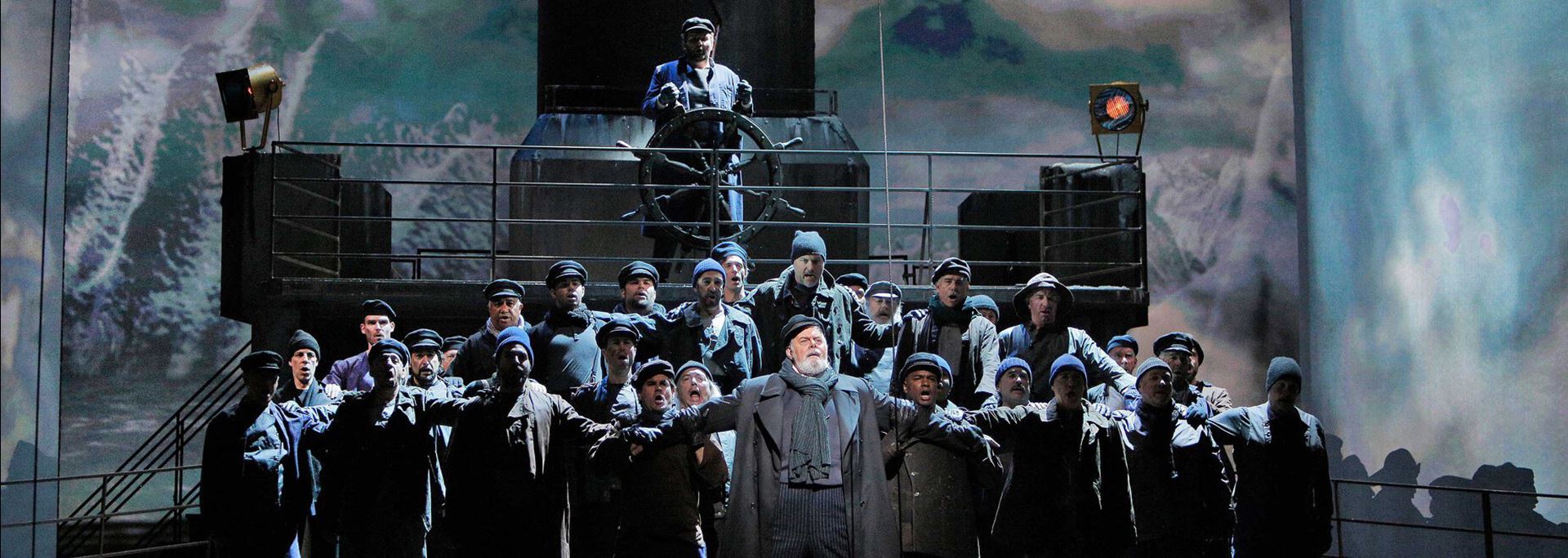
An Overview of German Opera
Since the beginnings of opera history, German opera has sung its own tune. From the earliest Singspeile to Richard Wagner, the German opera stage produced a variety of unique and groundbreaking works. Let’s take a journey through time and learn all about the history of German opera!
The Roots of German Opera
German opera history began in 1627 with composer Heinrich Schütz’s Dafne. This German composition was, itself, based on an Italian work of the same name considered the very first opera ever written.
Sadly, the score of this first German opera has been lost to time. As a result, the earliest surviving German opera is 1644’s The Sacred Forest Poem (Seelewig), composed by Sigmund Theophil Staden. A Christian allegory for the trials that await the human soul, Seelewig’s opera tells the story of a nymph caught between virtue and desire, culminating in her rescue from sin. It is often identified as the first example of a “Singspiel,” a form of German opera that would remain influential for many years to come.
The trademark of Singspiele was spoken dialogue interspersed with ballads, arias, and ensemble numbers. The music was strophic, meaning it followed a rhythmic pattern of repeated lines and melodies quite similar to German folk music and religious hymns. Singspiel plots were usually comic or romantic and featured magical settings and fantastical creatures—themes that recur in German operas throughout history.
German Opera Reaches the Public
In 1678, Germany’s first public opera house, the Theater am Gänsemarkt, opened in Hamburg. Whereas opera was previously restricted to individuals who had access to court opera houses—largely aristocrats and nobility—the Theater am Gänsemarkt opened the door for anyone who could pay to access the art form.
Throughout the 17th and 18th centuries, the Theater am Gänsemarkt presented operas from the most famous German opera composers. These included German-born London-based composer George Frideric Handel and Reinhard Keiser, a central figure of the Hamburg opera scene. While Keiser’s name may not be remembered as well as Handel’s today, his impact on German opera is undeniable. In addition to writing over 100 operas between 1694 and 1734, he served as both the principal composer and the director-manager of Theater am Gänsemarkt.
German Opera in the Classical Period
By the Classical period of the mid-17th century, Singspiel was considered the “national style” of German opera. The result was that—while contemporaneous Italian operas tended toward greater extravagance and drama—the music, stories, and characters of German opera stayed relatively simple by comparison. It wasn’t until Wolfgang Amadeus Mozart came on the scene in the 18th century that German opera was finally perceived as matching the musical sophistication and complex plotlines of Italian opera.
The Austrian-born Mozart was the first figure in German opera to effectively harness the grandeur and musical virtuosity of “opera seria.” For much of his career, he alternated between Italian opera styles and the Singspiele popular in his native German, often blurring the lines between the genres. His final opera—a Singspiel called The Magic Flute (Die Zauberflöte)—was an ambitious fantasy that combined folk melodies with ornate Italian coloratura. It remains popular to this day.
After Mozart's death in 1791, his work served as an example to contemporaries like Ludwig van Beethoven, who saw Mozart's opera as a standard to aspire to—and a predecessor to react against.
Beethoven's own adventures in opera-writing were fitful at best: He only completed one opera during his lifetime, revising and re-releasing it twice after its 1805 premiere. That opera, Fidelio, initially opened to a half-empty theater. But by the time the final version debuted in 1814, it was heralded a success.
The Romantic Period Begins
By the early 19th century, many German composers had turned to Romantic opera and grand opera instead of Singspiel—though some composers did continue to write in the traditional style. These new massive and emotional productions featured larger-than-life characters, events, and music on highly ornamental stages.
A reaction, in part, against a rapidly industrializing world, German Romanticism reached to the Middle Ages, folklore, and the natural world for inspiration. Emotion was prized over cold rationalism, and this led to an embrace of fantasy and supernatural elements in storytelling alongside themes of German nationalism.
These characteristics are particularly apparent in three works composed by Carl Maria von Weber between 1821 and 1826 that are considered to be the first examples of Romanticism in German opera. The first of the operas, Weber’s The Marksman (Der Freischütz), evokes Romantic themes with its eerie, supernatural tale: In The Marksman, a young man hopes to earn the right to marry his sweetheart by winning a shooting contest. When he fails, he follows a forester into the depths of the woods, where he is gifted seven magic bullets, bought with the promise of a soul for the Devil.
Richard Wagner and Gesamtkunstwerk
Although Weber may have been first, there’s no doubt that one of the most prominent Romantic German opera composers was, and is, Richard Wagner. But Wagner probably wouldn't call himself a composer of “opera” at all! He preferred to call his works “music dramas,” pointing to his novel idea of Gesamtkunstwerk or “total work of art.” Wagner believed every element of a performance—the music, costumes, scenic design, staging, everything—should work together equally to serve the drama or action of the story.
A classic and immensely impactful demonstration of gesamtkunstwerk is Richard Wagner’s Der Ring des Nibelungen (The Ring of the Nibelung), known in English as the Ring cycle. It consists of four operas, roughly 16 hours of performance, and ground-shaking leitmotifs such as the theme heard in the famous "Ride of the Valkyries."
It’s no surprise that the Ring cycle remains popular today. Its impact on opera was far-reaching in the 19th and 20th centuries. One of the many artists who was influenced by the work was German composer Richard Strauss. Strauss’s dark, violent operas Salome and Elektra utilize dissonance, bitonality, and unique instruments in their scores, emulating—yet expanding on—Wagnerian style.
Modernist and Contemporary German Opera
At the turn of the 20th century, Strauss' work straddled two periods: the late Romantic period and the early Modern one. Operas like Elektra and Salome laid the groundwork for modernism, with their preoccupation with Freudian psychology and experiments in atonality. But ultimately, Strauss turned away from modernism, instead dedicating the latter part of his career to lighter, more comedic operas.
Instead, German Modernism is typically defined by the music of Arnold Schoenberg and his student Alban Berg, two Viennese composers who were heavily influenced by German opera styles and stories.
The son of a Vienna businessman, Berg adapted his own librettos from German literature. Georg Büchner’s play Woyzeck was the basis of Berg’s 1925 opera Wozzek, and Frank Wedekind’s 1895 play Earth Spirit (Erdgeist) was instrumental to Berg’s 1937 opera Lulu. Berg set these tales to scores that employed continuous music, angular melodies, and extreme dissonance.
When it comes to postmodern German opera, two composers of note are Hans Werner Henze and Karlheinz Stockhausen, both of whose works exemplify the ways that the opera of the past continues to have influence long after its torch-bearers are gone.
Henze fused four distinct musical styles into his most famous work, 1965’s The Young Lord (Der junge Lord), a class satire that owes a large debt to traditional Italian opera buffa.
When it comes to Stockhausen, there’s no denying the role that Wagner has played in inspiring the composer’s works. Stockhausen’s epic cycle Light (Licht) consists of seven operas, one for each day of the week. That’s three more than Wagner’s Ring cycle! It took the composer 25 years to create the piece, and he was exacting in how each opera should be performed. Light was finally completed in 2003, and while each opera has since been staged, the cycle as a whole has yet to be produced.
The Future of German Opera
There’s no way of knowing what’s next for German opera, but with a history as unique and inventive as its productions, German opera is sure to continue breaking barriers and redefining opera’s sound, stories, and role in the world.
Want to learn more about opera? Start with our other blogs like the Brief History of Opera and our Overview of Italian Opera then check out what's in store for San Francisco opera on our website.


